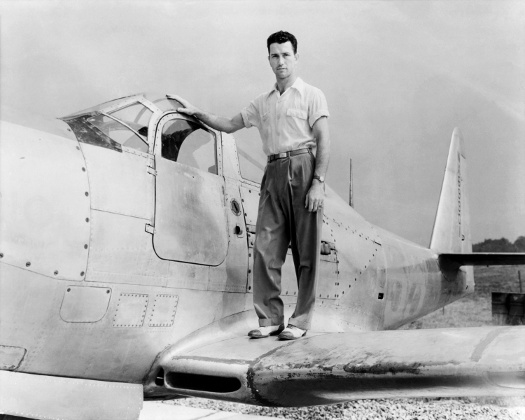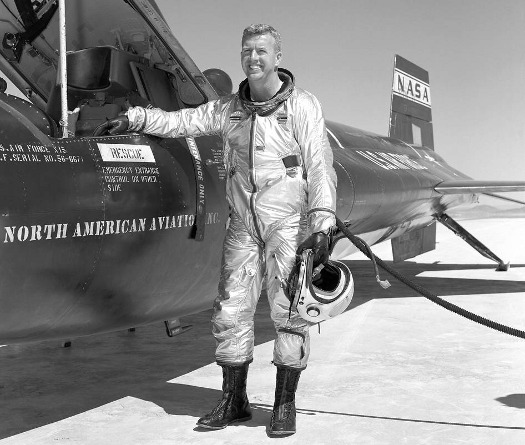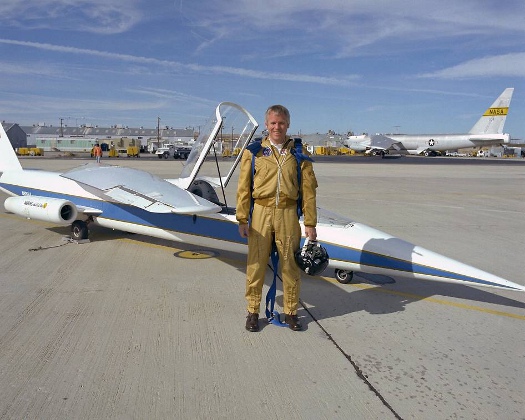 |
| March 03, 2020 | Volume 16 Issue 09 |
Designfax weekly eMagazine
Archives
Partners
Manufacturing Center
Product Spotlight
Modern Applications News
Metalworking Ideas For
Today's Job Shops
Tooling and Production
Strategies for large
metalworking plants
NASA Armstrong remembers pilots who lost their lives
By Christian Gelzer, NASA Armstrong Historian
NASA's Day of Remembrance on Jan. 30 recognized astronauts who have perished in the efforts to advance the nation's reach into space. It was also a day to reflect on how to keep future astronauts safe and the need to remain vigilant on safety.
On the same solemn day, NASA Armstrong Flight Research Center in California officials remembered three pilots in its history who died at the stick of a NASA or National Advisory Committee for Aeronautics (NACA) aircraft.
Howard C. "Tick" Lilly was the first NACA engineering pilot assigned to the Muroc Flight Test Unit, now known as NASA Armstrong.

Howard C. "Tick" Lilly was the first NACA engineering pilot assigned to the Muroc Flight Test Unit, now known as NASA Armstrong. He also was the first pilot who died on a research mission. Lilly is posing beside a P-63A airplane. [Credits: NACA/NASA Photo]
Lilly trained as a Naval aviator and joined the NACA's Langley Memorial Aeronautical Laboratory in Virginia, now known as Langley Research Center, in 1942. In 1943, he transferred to NACA's Lewis Flight Propulsion Laboratory in Cleveland, OH, (today's Glenn Research Center) and then to Muroc in 1947.
At Muroc, he flew the Douglas D-558-1 transonic research aircraft and the Bell X-1. Lilly was the fourth person to exceed the speed of sound. He died May 3, 1948, when components of the D-558-1's engine compressor failed, severing control cables, and the airplane crashed. He was the first NACA pilot to die in the line of duty.
It was 18 years later when the center lost another pilot. Joseph A. "Joe" Walker was a chief research pilot at the NASA Flight Research Center during the mid-1960s.

Joseph A. "Joe" Walker piloted such aircraft as the X-15. He died during a mission piloting the F-104. [Credits: NASA]
During World War II, Walker flew P-38 aircraft for the Army Air Force in North Africa. He joined NACA's Lewis Flight Propulsion Laboratory in Ohio in 1945 and transferred to the High-Speed Flight Research Station in 1951.
Walker made the first NASA-piloted X-15 flight March 25, 1960, and flew the aircraft 24 times, achieving its highest altitude (354,200 ft) Aug. 22, 1963. He made the first flight in the Lunar Landing Research Vehicle in 1964 that led to the Lunar Landing Training Vehicle used in Houston to train astronauts to land on the moon. Walker perished June 8, 1966, when his F-104 was caught in the wingtip vortex of the North American XB-70.
In the 1980s, a pilot proficiency flight claimed the life of Richard E. "Dick" Gray.

Richard E. "Dick" Gray, seen above with the AD-1 oblique wing experimental aircraft, lost his life during a pilot proficiency flight. [Credits: NASA]
Gray was an aerospace research pilot at NASA's Johnson Space Center in Houston from 1978 until he transferred to Ames-Dryden Flight Research Center, now NASA Armstrong.
At JSC, he was chief project pilot on the WB-57F high-altitude research aircraft and served as the prime chase pilot in the T-38 aircraft for video documentation of the landing portion of space shuttle orbital flight tests. A Naval aviator, he flew 48 combat missions in F-4s over Vietnam while assigned to squadron VF-111 aboard the USS Coral Sea in 1972.
Gray was fatally injured Nov. 8, 1982, in the crash of a Cessna T-37 aircraft while on a flight to hone his skills flying the airplane.
Published March 2020
Rate this article
View our terms of use and privacy policy
